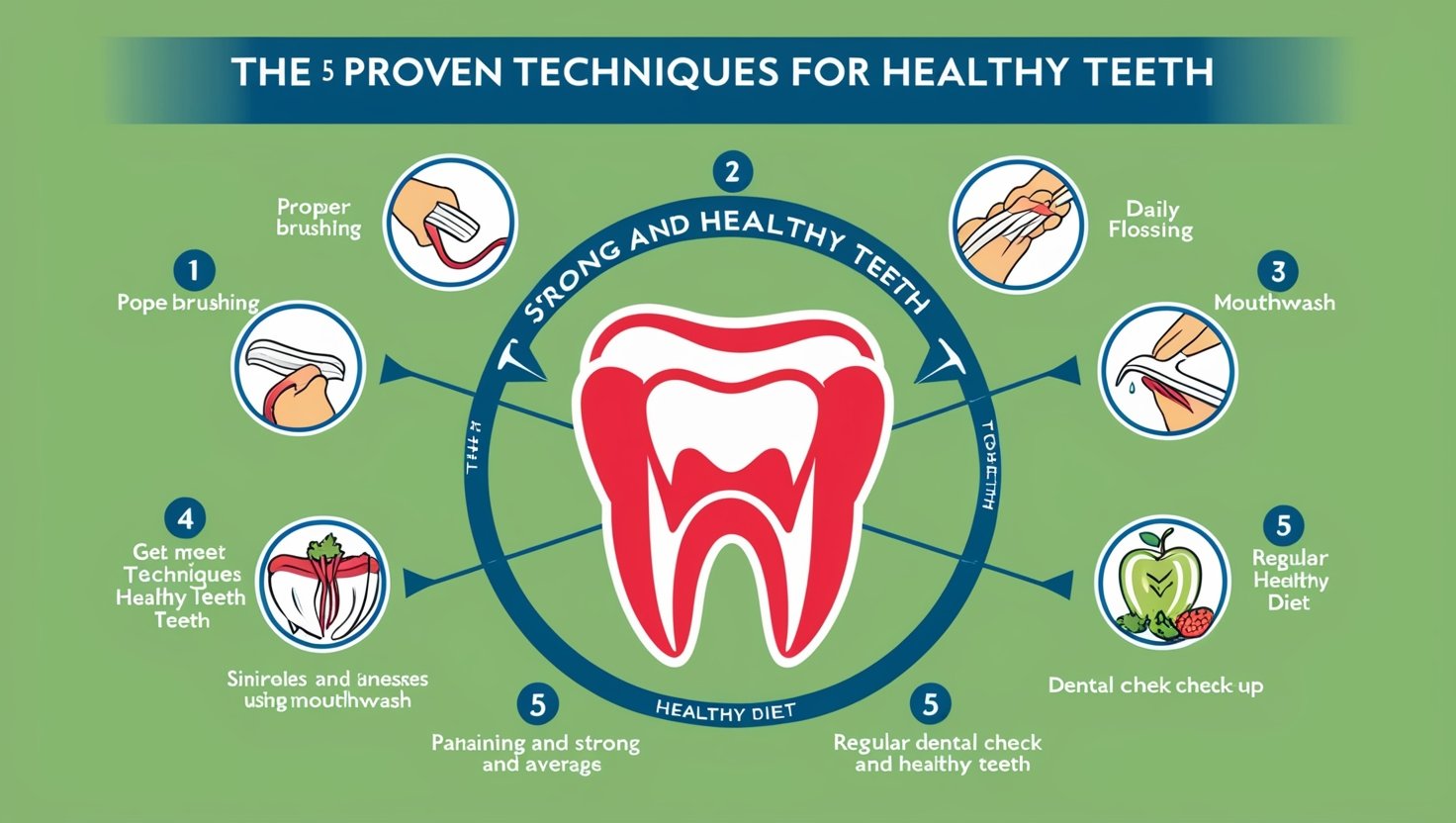
“5 Proven Techniques for Healthy Teeth”
5 Proven Techniques for Maintaining Healthy Teeth
Discover proven five effective oral care techniques that ensure strong, healthy teeth for a radiant smile. Enhance your dental hygiene today.
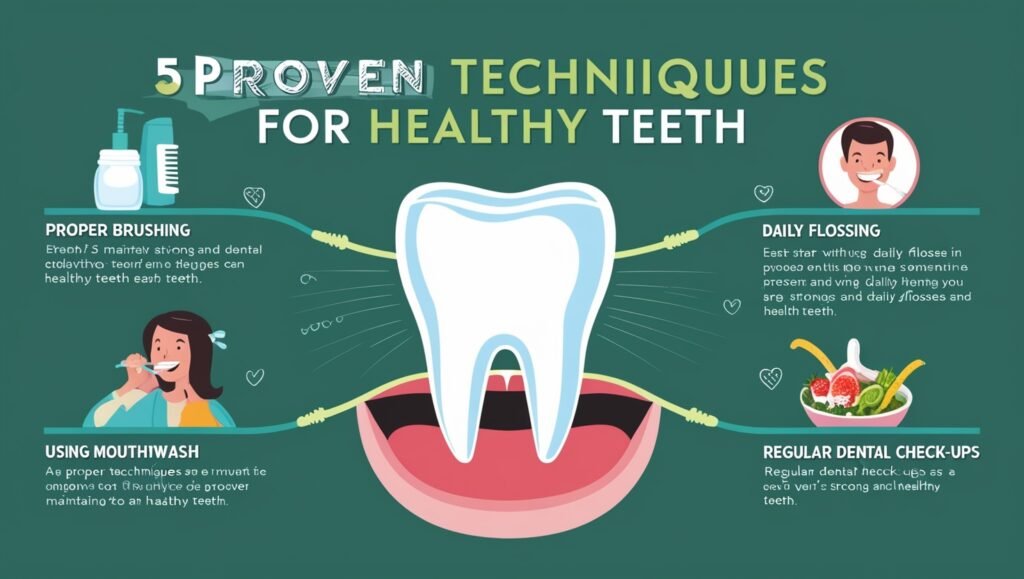
Read also: Tonsillitis: Quick Relief 7 Tips & Oral Cancer: A Comprehensive Guide
Introduction
Brief Overview of the Importance of Maintaining Healthy Teeth
Maintaining healthy teeth is essential for overall well-being. Healthy teeth not only contribute to a beautiful smile but also play a crucial role in chewing food properly, speaking clearly, and maintaining the structure of the face. Poor oral health can lead to various dental issues such as cavities, gum disease, and tooth loss, which can impact overall health and quality of life.
Explanation of How Proper Oral Care Contributes to Overall Health
Proper oral care is vital for preventing dental problems and maintaining overall health. Good oral hygiene practices, such as regular brushing and flossing, help remove plaque and bacteria that can cause tooth decay and gum disease. Additionally, maintaining healthy teeth and gums can reduce the risk of systemic health issues, such as heart disease, diabetes, and respiratory infections, which have been linked to poor oral health.
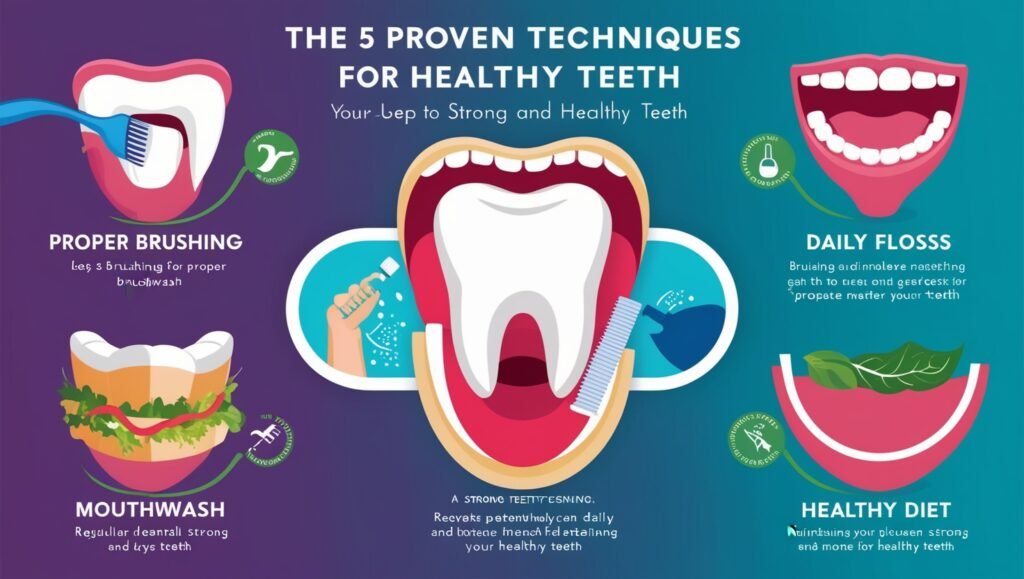
Overview of the 5 Proven Techniques to Be Discussed
In this guide, we will explore five proven techniques for maintaining healthy teeth. These techniques include brushing properly, flossing daily, using mouthwash, regular dental check-ups, and maintaining a healthy diet. By incorporating these practices into your daily routine, you can achieve and maintain optimal oral health.
Technique 1: Brushing Properly
Importance of Brushing Teeth Twice a Day
Brushing your teeth twice a day is essential for removing plaque and food particles that accumulate on the teeth and gums. Regular brushing helps prevent cavities, gum disease, and bad breath. It also ensures that your teeth and gums remain healthy and free from harmful bacteria.
Correct Brushing Technique
- Use a Soft-Bristled Toothbrush: Choose a toothbrush with soft bristles to avoid damaging the enamel and gums.
- Brush for Two Minutes: Spend at least two minutes brushing your teeth to ensure thorough cleaning.
- Angle the Brush: Hold the toothbrush at a 45-degree angle to the gums and use gentle, circular motions to clean the front, back, and chewing surfaces of each tooth.
- Brush the Tongue: Don’t forget to brush your tongue to remove bacteria and freshen your breath.
Tips for Choosing the Right Toothpaste
- Fluoride Toothpaste: Choose a toothpaste that contains fluoride, which helps strengthen tooth enamel and prevent cavities.
- ADA Seal of Acceptance: Look for the American Dental Association (ADA) Seal of Acceptance on the toothpaste packaging, indicating that the product meets safety and efficacy standards.
- Specific Needs: Consider toothpaste formulated for specific needs, such as sensitivity, whitening, or tartar control, based on your dental health requirements.
Technique 2: Flossing Daily
Benefits of Flossing for Removing Plaque and Preventing Gum Disease
Flossing is essential for removing plaque and food particles that a toothbrush can’t reach, particularly between the teeth and under the gumline. Regular flossing helps prevent gum disease, cavities, and bad breath by keeping these areas clean and free from harmful bacteria.
Step-by-Step Guide to Proper Flossing Technique
- Use Enough Floss: Break off about 18 inches of dental floss and wind most of it around one of your middle fingers. Wind the remaining floss around the same finger of the opposite hand.
- Hold the Floss Correctly: Hold the floss tightly between your thumbs and forefingers.
- Guide the Floss: Gently guide the floss between your teeth using a rubbing motion. Be careful not to snap the floss into your gums.
- Form a C Shape: When the floss reaches the gumline, curve it into a C shape against one tooth. Gently slide it into the space between the gum and the tooth.
- Move the Floss: Hold the floss tightly against the tooth and gently rub the side of the tooth, moving the floss away from the gum with up and down motions.
- Repeat: Repeat this process for each tooth, using a clean section of floss for each one.
Alternatives to Traditional Flossing
- Water Flossers: These devices use a stream of water to remove plaque and food particles between teeth and below the gumline. They are especially useful for people with braces or dental implants.
- Interdental Brushes: Small brushes designed to clean between the teeth. They come in various sizes to fit different gaps and are effective for removing plaque and debris.
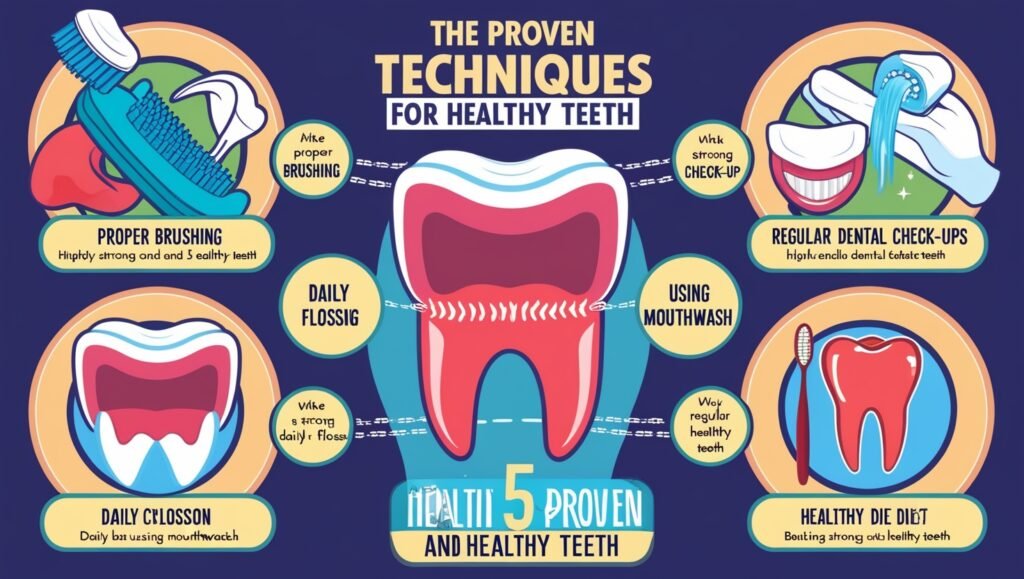
Technique 3: Using Mouthwash
Role of Mouthwash in Maintaining Oral Hygiene
Mouthwash can be an effective addition to your oral hygiene routine. It helps reduce bacteria in the mouth, freshens breath, and can reach areas that brushing and flossing might miss. Depending on the type, mouthwash can also help prevent cavities and gum disease.
Types of Mouthwash
- Antibacterial Mouthwash: Contains ingredients that kill bacteria and reduce plaque and gingivitis.
- Fluoride Mouthwash: Helps strengthen tooth enamel and prevent cavities.
- Alcohol-Free Mouthwash: Suitable for people with sensitive mouths or those who prefer to avoid alcohol.
How to Use Mouthwash Effectively
- Measure the Right Amount: Pour the recommended amount of mouthwash into a cup. This is usually about 20 milliliters or 4 teaspoons.
- Swish Thoroughly: Swish the mouthwash around your mouth for 30 seconds to 1 minute. Be sure to reach all areas, including between teeth and along the gumline.
- Spit Out: Do not swallow the mouthwash. Spit it out into the sink.
- Avoid Eating or Drinking: Wait at least 30 minutes before eating or drinking to allow the mouthwash to work effectively.

Technique 4: Regular Dental Check-Ups
Importance of Visiting the Dentist Regularly for Check-Ups and Cleanings
Regular dental check-ups are crucial for maintaining oral health. Dentists can detect early signs of dental problems, such as cavities, gum disease, and oral cancer, and provide timely treatment. Professional cleanings remove plaque and tartar buildup that regular brushing and flossing can’t eliminate, helping to prevent tooth decay and gum disease.
What to Expect During a Dental Visit
- Examination: The dentist will examine your teeth, gums, and mouth for any signs of dental issues.
- X-Rays: X-rays may be taken to detect problems that aren’t visible during the examination, such as cavities between teeth or issues with the jawbone.
- Cleaning: A dental hygienist will clean your teeth, removing plaque and tartar buildup. They will also polish your teeth and may apply fluoride treatment.
- Discussion: The dentist will discuss any findings, provide recommendations for treatment if needed, and answer any questions you may have.
How Often to Schedule Dental Appointments
- Routine Check-Ups: Most people should visit the dentist every six months for a check-up and cleaning. However, your dentist may recommend more frequent visits if you have specific dental issues or risk factors.
- Follow-Up Appointments: If you require treatment for a dental issue, follow your dentist’s recommendations for follow-up appointments to ensure proper care and recovery.
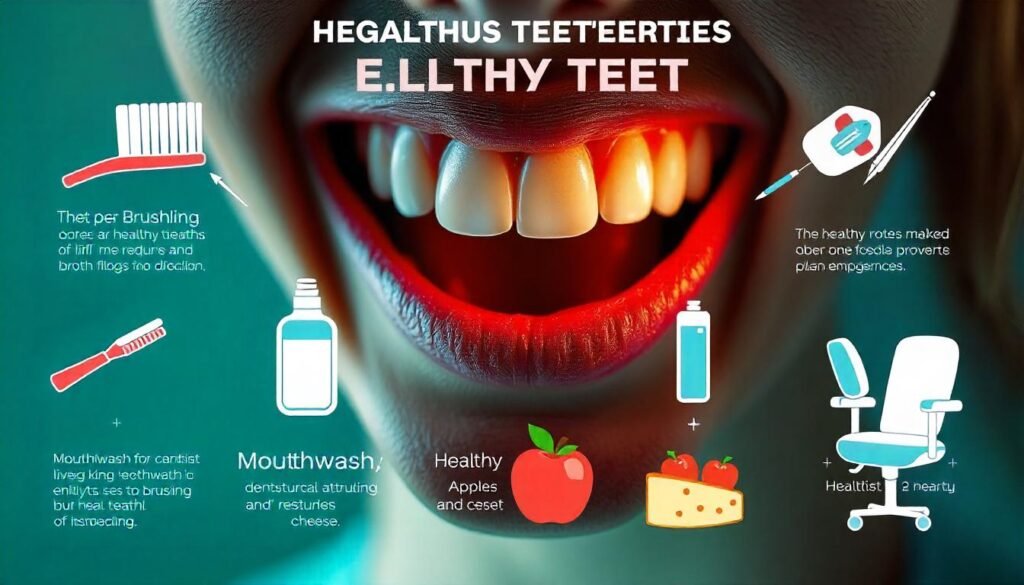
Technique 5: Healthy Diet for Strong Teeth
Impact of Diet on Dental Health
A healthy diet plays a crucial role in maintaining strong teeth and overall oral health. The foods you consume can either strengthen your teeth and gums or contribute to tooth decay and gum disease. Nutrient-rich foods support the development and maintenance of healthy teeth, while sugary and acidic foods can erode enamel and promote cavities.
Foods to Include for Healthy Teeth
- Dairy Products: Milk, cheese, and yogurt are rich in calcium and phosphates, which help strengthen tooth enamel and bones. They also stimulate saliva production, which helps neutralize acids in the mouth.
- Leafy Greens: Vegetables like spinach, kale, and broccoli are high in vitamins and minerals, including calcium and folic acid, which support gum health and overall oral hygiene.
- Crunchy Fruits and Vegetables: Apples, carrots, and celery act as natural toothbrushes, helping to clean teeth and stimulate gums. They also increase saliva production, which helps wash away food particles and bacteria.
- Nuts and Seeds: Almonds, walnuts, and chia seeds provide essential nutrients like calcium, phosphorus, and omega-3 fatty acids, which promote healthy teeth and gums.
- Water: Drinking plenty of water helps rinse away food particles and bacteria, keeping your mouth clean and hydrated.
Foods to Avoid
- Sugary Snacks: Candies, cookies, and sugary drinks can lead to tooth decay by providing a food source for harmful bacteria in the mouth.
- Acidic Beverages: Sodas, citrus juices, and energy drinks can erode tooth enamel, making teeth more susceptible to cavities and sensitivity.
- Sticky Foods: Foods like dried fruits and caramel can stick to teeth and promote plaque buildup, increasing the risk of cavities.
- Refined Carbohydrates: Foods like white bread and chips can break down into sugars in the mouth, feeding bacteria and contributing to tooth decay.

Conclusion
Recap of the 5 Proven Techniques for Healthy Teeth
- Brushing Properly: Brush your teeth twice a day with a soft toothbrush and fluoride toothpaste to remove plaque and prevent cavities.
- Flossing Daily: Floss daily to remove plaque and food particles between teeth and under the gumline, preventing gum disease and cavities.
- Using Mouthwash: Use mouthwash to reduce bacteria, freshen breath, and reach areas that brushing and flossing might miss.
- Regular Dental Check-Ups: Visit the dentist regularly for check-ups and cleanings to detect and treat dental issues early.
- Healthy Diet for Strong Teeth: Maintain a balanced diet rich in nutrients to support healthy teeth and gums, and avoid foods that can harm your oral health.
Encouragement to Implement These Techniques for Long-Term Dental Health
By incorporating these five proven techniques into your daily routine, you can achieve and maintain healthy teeth and gums. Consistency and dedication to proper oral care practices are key to preventing dental problems and ensuring long-term oral health. Remember, a healthy smile is a reflection of your overall well-being.
Final Thoughts on the Benefits of Maintaining Good Oral Hygiene
Maintaining good oral hygiene is essential for overall health and quality of life. Healthy teeth and gums contribute to a beautiful smile, proper chewing and digestion, clear speech, and a strong facial structure. By practicing effective oral care techniques and making healthy dietary choices, you can enjoy the benefits of a healthy mouth and a confident smile. Prioritize your oral health and take proactive steps to protect your teeth and gums for a lifetime of dental wellness.
By incorporating these five proven techniques into your daily routine, you can achieve and maintain healthy teeth and gums. Consistency and dedication to proper oral care practices are key to preventing dental problems and ensuring long-term oral health. Remember, a healthy smile is a reflection of your overall well-being.



